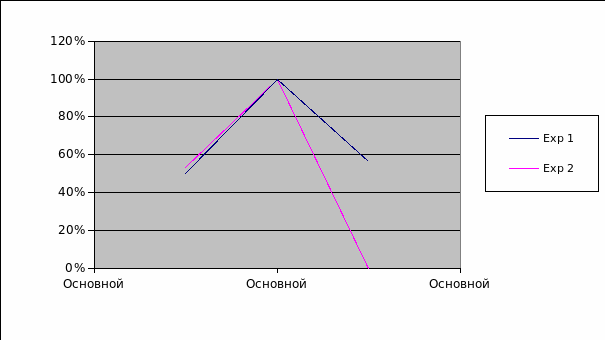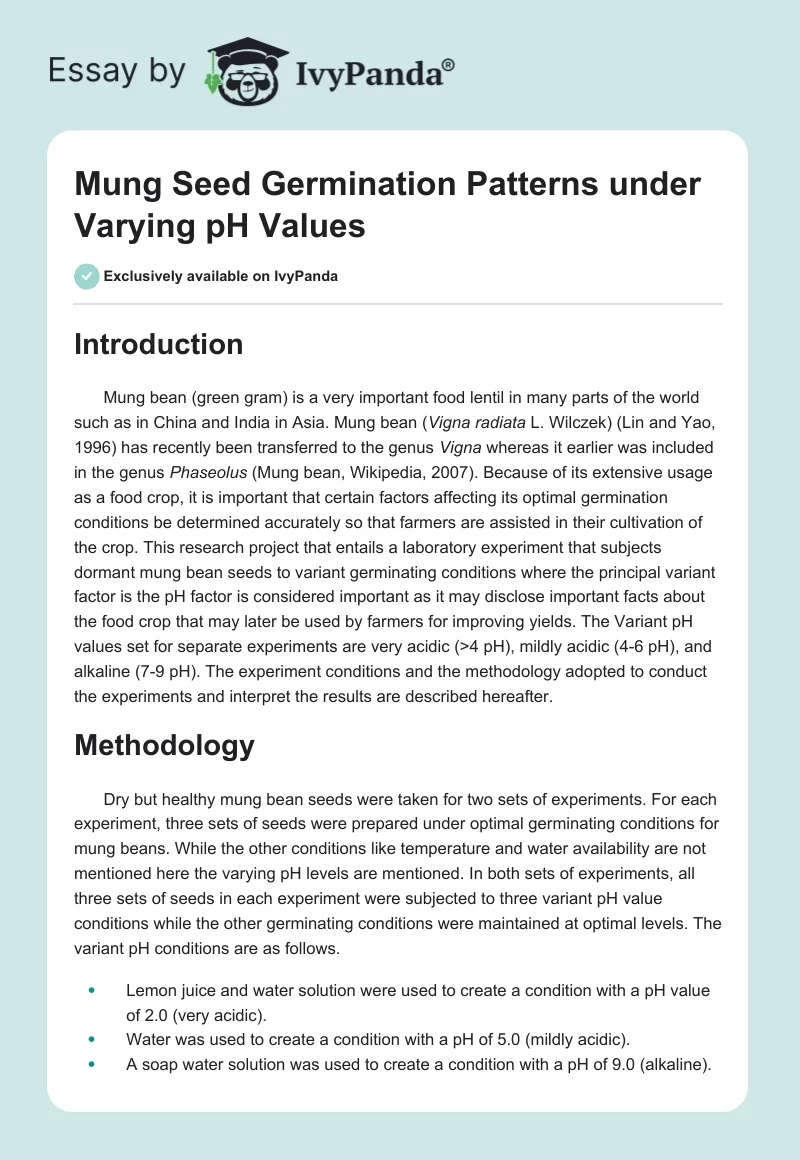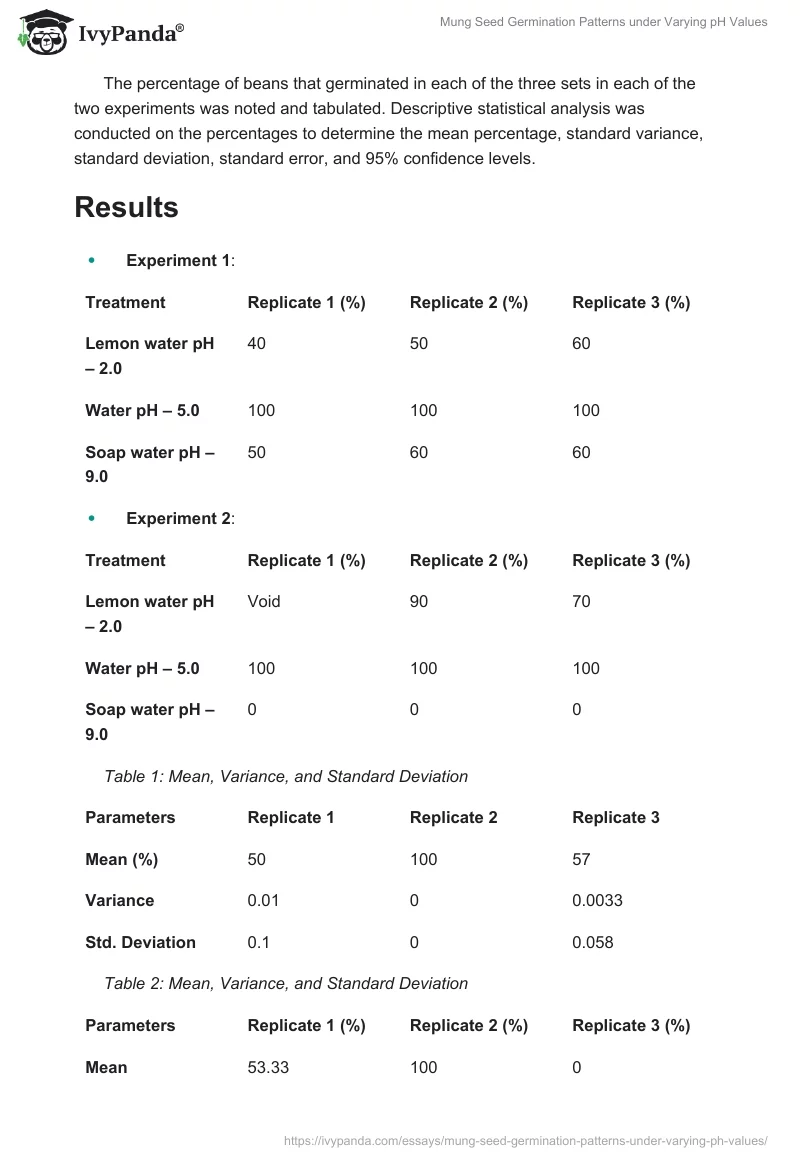Introduction
Mung bean (green gram) is a very important food lentil in many parts of the world such as in China and India in Asia. Mung bean (Vigna radiata L. Wilczek) (Lin and Yao, 1996) has recently been transferred to the genus Vigna whereas it earlier was included in the genus Phaseolus (Mung bean, Wikipedia, 2007). Because of its extensive usage as a food crop, it is important that certain factors affecting its optimal germination conditions be determined accurately so that farmers are assisted in their cultivation of the crop.
This research project that entails a laboratory experiment that subjects dormant mung bean seeds to variant germinating conditions where the principal variant factor is the pH factor is considered important as it may disclose important facts about the food crop that may later be used by farmers for improving yields. The Variant pH values set for separate experiments are very acidic (>4 pH), mildly acidic (4-6 pH), and alkaline (7-9 pH). The experiment conditions and the methodology adopted to conduct the experiments and interpret the results are described hereafter.
Methodology
Dry but healthy mung bean seeds were taken for two sets of experiments. For each experiment, three sets of seeds were prepared under optimal germinating conditions for mung beans. While the other conditions like temperature and water availability are not mentioned here the varying pH levels are mentioned. In both sets of experiments, all three sets of seeds in each experiment were subjected to three variant pH value conditions while the other germinating conditions were maintained at optimal levels. The variant pH conditions are as follows.
- Lemon juice and water solution were used to create a condition with a pH value of 2.0 (very acidic).
- Water was used to create a condition with a pH of 5.0 (mildly acidic).
- A soap-water solution was used to create a condition with a pH of 9.0 (alkaline).
The percentage of beans that germinated in each of the three sets in each of the two experiments was noted and tabulated. Descriptive statistical analysis was conducted on the percentages to determine the mean percentage, standard variance, standard deviation, standard error, and 95% confidence levels.
Results
Experiment 1:
Experiment 2:
Table 1: Mean, Variance, and Standard Deviation
Table 2: Mean, Variance, and Standard Deviation
Standard error and confidence levels for both experiments were not possible because of the small number of samples that were below the minimum for both parameters.

Discussion
As is evident from the tabulated percentage figures for experiment 1 the results the experiment is more successful than experiment 2. Both variance and standard deviation (Tables 1 & 2) are much less than corresponding figures for successful parts of experiment 2. This demonstrates, in the absence of both standard error and confidence level figures, that experiment 1 has elicited plausible results.
Graph 1 (blue line) shows that the mean figures plotted result in a graph line peak at pH 5.0. This is quite in line with known optimal pH values for mung bean seed germination conditions – pH 5.5-8.5 (Ali, Undated). Recent research has shown that proteolytic activity in mung seeds before germination is most at pH values within the range mentioned before – 5.5-8.5 (Lin and Yao, 1996). Protein synthesis is a major activity in all organic processes within living tissue and thus optimal conditions for it are highly essential to that process – in this case, germination.
Conclusion
It is desirable that experiment 2 had been as successful as experiment 1 as it is found necessary that the mean figure for the alkaline pH value at 9.0 from experiment 2 would have corroborated with the mean figure from the 1st experiment to provide a more strong basis for the conclusion that mung bean seeds germinate optimally under pH conditions set at 5.5-8.5 (Ali, Undated). Since the alkaline pH set for these experiments is 9.0 a higher mean for both experiments nearer to 100 (the mean value for pH 5.0) would have made the overall experiment results corroborate more strongly with the known optimal pH values for mung seeds.
References
- Ali, Masood, Directorate of Pulses Research, Kanpur, India, Undated.
- Lin, Yaw-Huei, and Yao, Wen-Hsiang, Mungbean (Vigna radiata L. Wilczek) contain some high proteolytic activities already before germination, Bot. Bull. Acad. Sin., (1996) 37: 1-7.
- Mung Bean, Wikipedia, 2007. Web.


